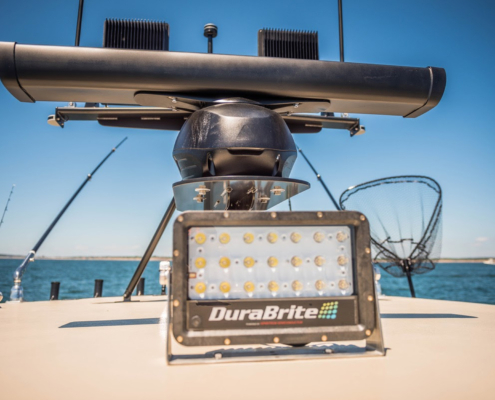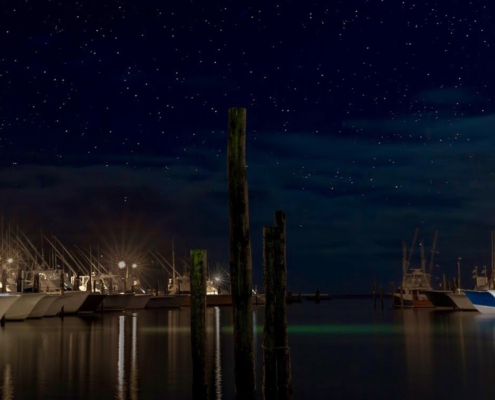 https://blog.durabritelights.com/wp-content/uploads/2025/04/How-Weatherproofing-Maximizes-the-Lifespan-of-Waterproof-Boat-Lights.jpg
1250
2000
Abstrakt Marketing
/wp-content/uploads/2024/01/DuraBrite-Logo_6a362a2d-4dff-4723-a7e4-1466056fae1e_220x.png
Abstrakt Marketing2025-04-21 13:30:212025-04-21 13:30:24How Weatherproofing Maximizes the Lifespan of Waterproof Boat Lights
https://blog.durabritelights.com/wp-content/uploads/2025/04/How-Weatherproofing-Maximizes-the-Lifespan-of-Waterproof-Boat-Lights.jpg
1250
2000
Abstrakt Marketing
/wp-content/uploads/2024/01/DuraBrite-Logo_6a362a2d-4dff-4723-a7e4-1466056fae1e_220x.png
Abstrakt Marketing2025-04-21 13:30:212025-04-21 13:30:24How Weatherproofing Maximizes the Lifespan of Waterproof Boat LightsBoat Lighting Maintenance Tips
To keep your center console’s lights looking sharp and shining bright for years to come, follow these tips to simplify boat lighting maintenance.
A Brief Intro to Boat Lighting Maintenance
On the water, visibility is not just about seeing but also being seen. That’s why your boat’s lighting system demands careful consideration before setting sail. The good news is with the right lights, day-to-day maintenance should be fairly minimal following proper installation.
To maintain navigation and deck lights, check their functionality before each trip, then hose down lenses and inspect bulbs for brightness as part of your post-trip checklist. Examine fixtures and connections for corrosion or possible water intrusion, ensuring wiring remains intact and secure. Use protective covers when lights are not in use.
Put more simply in the 69th edition of Chapman’s Piloting and Seamanship,
Lights should always be checked before leaving the dock if night operation is scheduled. Many boats are used only in the daytime, but the wise skipper checks all navigation lights once a month—whether they have been used or not.
How To Visually Inspect Boat Lights
Regular inspections and cleanings keep your boat lights functioning properly, ensuring safety and compliance with regulations on the water. Follow these steps when inspecting your boat lights:
- Begin by visually assessing the entire light fixture, looking for signs of physical deformities or damage.
- Check that lenses aren’t cloudy or obscured. An unobstructed path for the light is necessary for maximum illumination, so cloudy or dirty lenses should be immediately cleaned.
- Check all electrical connections. They should be snug without any signs of overheating, like discoloration or melted wire sleeves.
- Inspect wiring for any signs of wear, abrasion, or corrosion that could impair functionality.
- Examine seals and gaskets for integrity to prevent water from entering the unit. Ensure cable jackets remain protected from the elements.
- Activate the lights to ensure each bulb fully illuminates.
The Best Way To Clean Boat Lights
Boat lights must be cleaned properly to avoid damage, corrosion, or premature failure. Use a soft cloth dampened with fresh water to gently wipe down incandescent bulbs and fixtures. For more durable LED systems, a mild soap solution such as boat cleaning detergent can remove salty residue. If a light is rated IP65 or higher, you can hose the unit down with boat soap and rinse, while lights rated IP67 and higher can withstand pressure washing.
Preventing Corrosion in Marine Lighting
Marine environments pose unique challenges to boat lighting systems, notably the constant threat of corrosion. To safeguard against the destructive effects of saltwater, oxygen in the air, and UV from the sun, these options will get you the furthest:
- IP Ratings: Consider installing or upgrading lights with higher Ingress Protection (IP) ratings (ideally IP67 or higher) for superior waterproofing.
- Breather Valves/Pressure Relief Valves: Pressure differences between the inside and outside of a waterproof light fixture can accelerate the aging of seals and gaskets over time, leading to water ingress. Breather valves—also known as pressure relief valves—can protect against this damage by equalizing pressure regardless of environmental changes in temperature or weather. This ensures waterproof ratings are maintained during the lifetime of the product. The valve contains a membrane that keeps water and dust out while remaining porous enough to allow air to pass through. While not all marine lights have these, those that do have extra protection against corrosion due to seals or gaskets breaking down.
- Stainless Steel and Aluminum: Use 316 stainless steel or aluminum fixtures whenever possible, as these materials inherently resist rust and corrosion better. Treatments and coatings may also be necessary to enhance longevity, such as anodizing aluminum parts, which adds a corrosion-resistant layer. It’s critical to note that when aluminum and stainless steel come into contact, they must be separated by an insulator like nylon to prevent galvanic corrosion.
- Protective Coatings: Applying anti-corrosive paint or a ceramic coating can act as an additional barrier to elements that contribute to corrosion. These coatings protect not only the functionality of fixtures but also keep them looking new. The two most common paint-coating options for LEDs are e-coating and powder coating. While e-coating is cheaper, powder coating is thicker and can last up to 10 times longer. It’s recommended to avoid e-coated components in marine environments due to inferior adhesion and the thin layer of protection they provide.
Protective Ceramic Coatings for Boat Lighting
Ceramic coatings offer the best option for boat owners who want to maximize the longevity and performance of their lights in harsh marine environments while simplifying maintenance. These coatings contain a liquid polymer combined with ceramic nanoparticles that bind to the minuscule peaks and valleys found on porous surfaces. When cured, the coating fills those pores and creates a nonporous, hydrophobic surface to provide an additional layer of protection against UV rays, saltwater, debris, and other corrosive elements.
Without this protection, light output diminishes over time as lenses become hazy, and corrosion can damage components. The hydrophobic properties of ceramic coatings prevent oxidation and corrosion before they happen by repelling water and reducing the buildup of salt and mineral deposits that would normally penetrate and damage porous surfaces. At the same time, the smooth, durable finish of ceramic coatings also makes it easier to clean and maintain the light in the long run.
DuraBrite’s Ultra Ceramic Coating is up to four times thicker than the competition, and that’s why we back it with a five-year warranty.
Troubleshooting and Repairing Boat Lights
When boat lights malfunction, the first step is to check the basics: ensure the lights are turned on and that the power source is functioning. Then, inspect for blown fuses or tripped breakers, which should be replaced or reset. Loose, corroded, or damaged connections or wiring may also need to be replaced to restore the flow of electricity. Sometimes, the issue could be as simple as an oxidized contact on the break itself that’s causing an intermittent connection.
Dim or flickering lights often indicate an issue with voltage regulation or wiring. A multimeter proves invaluable for measuring voltage levels and confirming a consistent power supply. For LED lights that cease to function correctly, the chip—the component regulating the power to the LED—could also be the culprit. When lights are installed without inline fast-acting fuses, power surges can degrade the input section of the control circuitry, eventually killing it.
Condensation inside the light fixture is another common problem, indicating compromised waterproof sealing. For navigation lights, your best option is commonly a complete replacement since safety comes first, and these lights are highly regulated for a reason. If the light is still covered under warranty, contact the manufacturer for replacement options.
If the warranty has expired for deck or auxiliary lights, opening the fixture, drying the interior, and resealing it may extend the life of the light as long as the electronics are still functional, but you should consider replacement if the issue persists.
When to Seek Professional Help
If the troubleshooting steps outlined above fail to resolve the issue, professional expertise is likely required, especially when dealing with complex electrical systems. For persistent electrical issues, such as consistent tripping of circuit breakers or fuses, a professional can identify and fix underlying wiring problems.
Signs It’s Time to Replace or Upgrade Your Boat’s Lights
Have you been experiencing frequent dimming, flickering, or a complete outage with your boat’s lights? These markers frequently indicate the need for lighting updates or replacements, but first check connections and cables for signs of damage or corrosion, including breaker contacts. Frequent bulb burnouts or damage from corrosion may also indicate it’s time for a replacement. Advancements in technology or changes in boating regulations may mean lights need to be updated to comply with new standards.
Recognizing the right time to invest in new lights can save you from potential safety hazards and additional expenses such as fines, penalties, or insurance premiums later on. Due to their longevity and decreased power consumption, LEDs have become the most popular option for marine lighting. Prior to installation, be sure to verify the compatibility of new lights with your boat’s electrical system.
Choose DuraBrite When You Want the Best-in-Class Boat Lights
DuraBrite builds lights specifically designed to withstand the harsh demands of the marine environment. That’s why our lights are trusted by the captains on Wicked Tuna, the NYPD Harbor Unit, and lobstermen across Maine. Take a look at our original lineup of LED boat lights as well as our selection of marine-grade ceramic coatings to start brainstorming your boat’s new lighting setup.
Share This Post
More Like This
 https://blog.durabritelights.com/wp-content/uploads/2025/04/How-Weatherproofing-Maximizes-the-Lifespan-of-Waterproof-Boat-Lights.jpg
1250
2000
Abstrakt Marketing
/wp-content/uploads/2024/01/DuraBrite-Logo_6a362a2d-4dff-4723-a7e4-1466056fae1e_220x.png
Abstrakt Marketing2025-04-21 13:30:212025-04-21 13:30:24How Weatherproofing Maximizes the Lifespan of Waterproof Boat Lights
https://blog.durabritelights.com/wp-content/uploads/2025/04/How-Weatherproofing-Maximizes-the-Lifespan-of-Waterproof-Boat-Lights.jpg
1250
2000
Abstrakt Marketing
/wp-content/uploads/2024/01/DuraBrite-Logo_6a362a2d-4dff-4723-a7e4-1466056fae1e_220x.png
Abstrakt Marketing2025-04-21 13:30:212025-04-21 13:30:24How Weatherproofing Maximizes the Lifespan of Waterproof Boat Lights https://blog.durabritelights.com/wp-content/uploads/2025/04/leviathan-boat-on-water.jpg
1250
2000
Abstrakt Marketing
/wp-content/uploads/2024/01/DuraBrite-Logo_6a362a2d-4dff-4723-a7e4-1466056fae1e_220x.png
Abstrakt Marketing2025-04-04 18:45:522025-04-09 17:01:05How to Maximize the Lifespan of Marine LED Lighting
https://blog.durabritelights.com/wp-content/uploads/2025/04/leviathan-boat-on-water.jpg
1250
2000
Abstrakt Marketing
/wp-content/uploads/2024/01/DuraBrite-Logo_6a362a2d-4dff-4723-a7e4-1466056fae1e_220x.png
Abstrakt Marketing2025-04-04 18:45:522025-04-09 17:01:05How to Maximize the Lifespan of Marine LED Lighting https://blog.durabritelights.com/wp-content/uploads/2025/04/Design-Ideas-for-LED-Deck-Lights-on-Your-Boat.jpg
1250
2000
Abstrakt Marketing
/wp-content/uploads/2024/01/DuraBrite-Logo_6a362a2d-4dff-4723-a7e4-1466056fae1e_220x.png
Abstrakt Marketing2025-04-02 14:09:522025-04-09 16:52:11Design Ideas for LED Deck Lights on Your Boat
https://blog.durabritelights.com/wp-content/uploads/2025/04/Design-Ideas-for-LED-Deck-Lights-on-Your-Boat.jpg
1250
2000
Abstrakt Marketing
/wp-content/uploads/2024/01/DuraBrite-Logo_6a362a2d-4dff-4723-a7e4-1466056fae1e_220x.png
Abstrakt Marketing2025-04-02 14:09:522025-04-09 16:52:11Design Ideas for LED Deck Lights on Your Boat https://blog.durabritelights.com/wp-content/uploads/2025/03/Side-image-of-a-boat-with-lights.jpg
1250
2000
Abstrakt Marketing
/wp-content/uploads/2024/01/DuraBrite-Logo_6a362a2d-4dff-4723-a7e4-1466056fae1e_220x.png
Abstrakt Marketing2025-03-27 18:36:262025-03-31 17:43:25The Hidden Costs of Cheap Marine LED Lights and How to Avoid Them
https://blog.durabritelights.com/wp-content/uploads/2025/03/Side-image-of-a-boat-with-lights.jpg
1250
2000
Abstrakt Marketing
/wp-content/uploads/2024/01/DuraBrite-Logo_6a362a2d-4dff-4723-a7e4-1466056fae1e_220x.png
Abstrakt Marketing2025-03-27 18:36:262025-03-31 17:43:25The Hidden Costs of Cheap Marine LED Lights and How to Avoid Them https://blog.durabritelights.com/wp-content/uploads/2025/03/The-5-Must-Have-Features-of-High-Quality-Marine-Lights.jpg
1250
2000
Abstrakt Marketing
/wp-content/uploads/2024/01/DuraBrite-Logo_6a362a2d-4dff-4723-a7e4-1466056fae1e_220x.png
Abstrakt Marketing2025-03-21 12:36:192025-03-31 17:18:16The 5 Must-Have Features of High-Quality Marine Lights
https://blog.durabritelights.com/wp-content/uploads/2025/03/The-5-Must-Have-Features-of-High-Quality-Marine-Lights.jpg
1250
2000
Abstrakt Marketing
/wp-content/uploads/2024/01/DuraBrite-Logo_6a362a2d-4dff-4723-a7e4-1466056fae1e_220x.png
Abstrakt Marketing2025-03-21 12:36:192025-03-31 17:18:16The 5 Must-Have Features of High-Quality Marine Lights https://blog.durabritelights.com/wp-content/uploads/2025/03/DuraBrite-Lght-on-Boat.jpg
1250
1996
Abstrakt Marketing
/wp-content/uploads/2024/01/DuraBrite-Logo_6a362a2d-4dff-4723-a7e4-1466056fae1e_220x.png
Abstrakt Marketing2025-03-19 12:23:432025-03-31 17:07:19How DuraBrite Built a Better Marine Light
https://blog.durabritelights.com/wp-content/uploads/2025/03/DuraBrite-Lght-on-Boat.jpg
1250
1996
Abstrakt Marketing
/wp-content/uploads/2024/01/DuraBrite-Logo_6a362a2d-4dff-4723-a7e4-1466056fae1e_220x.png
Abstrakt Marketing2025-03-19 12:23:432025-03-31 17:07:19How DuraBrite Built a Better Marine Light https://blog.durabritelights.com/wp-content/uploads/2025/03/Comparing-Halogen-HID-and-LED-Marine-Lights.jpg
1250
2000
Abstrakt Marketing
/wp-content/uploads/2024/01/DuraBrite-Logo_6a362a2d-4dff-4723-a7e4-1466056fae1e_220x.png
Abstrakt Marketing2025-03-17 14:26:562025-03-31 16:56:54Comparing Halogen, HID, and LED Lights for Boats: Which Is Right for You?
https://blog.durabritelights.com/wp-content/uploads/2025/03/Comparing-Halogen-HID-and-LED-Marine-Lights.jpg
1250
2000
Abstrakt Marketing
/wp-content/uploads/2024/01/DuraBrite-Logo_6a362a2d-4dff-4723-a7e4-1466056fae1e_220x.png
Abstrakt Marketing2025-03-17 14:26:562025-03-31 16:56:54Comparing Halogen, HID, and LED Lights for Boats: Which Is Right for You? https://blog.durabritelights.com/wp-content/uploads/2025/03/How-Marine-Lighting-Highlights-Your-Boats-Aesthetic-Appeal.jpg
1250
2000
Abstrakt Marketing
/wp-content/uploads/2024/01/DuraBrite-Logo_6a362a2d-4dff-4723-a7e4-1466056fae1e_220x.png
Abstrakt Marketing2025-03-10 13:26:322025-03-31 16:28:45How Marine Lighting Highlights Your Boat’s Aesthetic Appeal
https://blog.durabritelights.com/wp-content/uploads/2025/03/How-Marine-Lighting-Highlights-Your-Boats-Aesthetic-Appeal.jpg
1250
2000
Abstrakt Marketing
/wp-content/uploads/2024/01/DuraBrite-Logo_6a362a2d-4dff-4723-a7e4-1466056fae1e_220x.png
Abstrakt Marketing2025-03-10 13:26:322025-03-31 16:28:45How Marine Lighting Highlights Your Boat’s Aesthetic Appeal https://blog.durabritelights.com/wp-content/uploads/2025/02/Side-view-of-boat-with-floodlights.jpg
1250
2000
Abstrakt Marketing
/wp-content/uploads/2024/01/DuraBrite-Logo_6a362a2d-4dff-4723-a7e4-1466056fae1e_220x.png
Abstrakt Marketing2025-02-20 20:46:302025-03-31 15:48:27How Boat Lights for Docking and Anchoring Improve Safety
https://blog.durabritelights.com/wp-content/uploads/2025/02/Side-view-of-boat-with-floodlights.jpg
1250
2000
Abstrakt Marketing
/wp-content/uploads/2024/01/DuraBrite-Logo_6a362a2d-4dff-4723-a7e4-1466056fae1e_220x.png
Abstrakt Marketing2025-02-20 20:46:302025-03-31 15:48:27How Boat Lights for Docking and Anchoring Improve SafetyCreating advanced lighting solutions that excel across extreme applications, from crab-fishing in Alaska’s Bering Sea, to unforgiving power plants to mission critical law enforcement and military tactical environments, all with uncompromising quality


